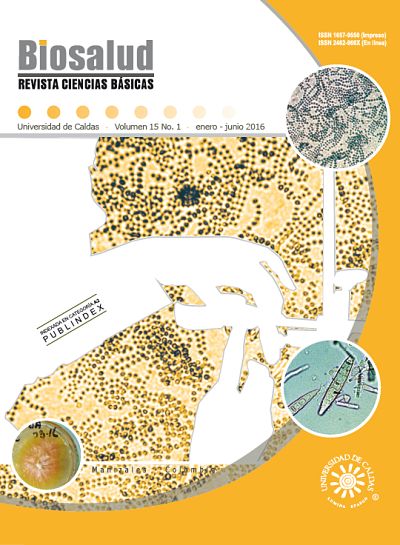Authors
Abstract
Introduction: Singlet oxygen is a reactive species obtained via energy transfer using a photosensitizer. Its direct quantification requires expensive instrumentation, so it is necessary to use indirect methods having sufficient selectivity and low cost. These procedures are based on the chemical interception of singlet oxygen producing a species that can be detected using conventional analytical methods. This article describes the utilization of 9-[(E)-2- phenylethenyl]anthracene 1 (PEA) and 9-[(E)-2- (naphtalen-2-yl)ethenyl]anthracene 2 (NEA) as suitable and economic alternatives for the indirect quantification of singlet oxygen in aqueous media. Their advantage is the easy detection of their fluorescence once they are oxidized by singlet oxygen. Materials and Methods: Compounds were synthesized and characterized following procedures previously reported. Their capacity to trap singlet oxygen was determined by monitoring their photosensitized oxidation in either a H2 O/THF solution or within Leishmania tarentolae parasites, utilizing methylene blue or rose bengal as photosensitizers. Experimental samples were illuminated with a lamp emitting visible light, while spectroscopical techniques (absorption, fluorescence, 1 H-NMR) and mass spectrometry were used to monitor trapping and photooxidation. Results and Discussion: Spectroscopical evidence demonstrates that both PEA 1 and NEA 2 are capable of trapping singlet oxygen in both aqueous media and within L. tarentolae parasites. Viability studies demonstrate that PEA 1 is cytotoxic in the dark and when parasite cultures were exposed to light, while NEA 2 does not show dark cytotoxicity, but is toxic when cultures were exposed to light. It can be concluded that both compounds under study may be utilized as probes to detect and quantify the production of singlet oxygen in aqueous media and potentially in cell cultures, although it is recommended to evaluate their cytotoxic activity both in the dark and upon light exposure in these cases.
References
2. Dougherty TJ, Gomer CJ, Henderson BW, Jori G, Kessel D, Korbelik M, et al. Photodynamic therapy. J Natl. Cancer Inst. 1998; 90:889-905.
3. Photodynamic Therapy of Neoplastic Disease. Volume I, Kessel D, ed. Boca Raton, Florida: CRC Press; 1990.
4. Weishaupf KR, Gomer CJ, Dougherty TJ. Identification of singlet oxygen as the cytotoxic agent in photoinactivation of a murine tumor. Cancer Res. 1976; 36:2326-2329.
5. Allison RR, Moghissi K. Oncologic photodynamic therapy: clinical strategies that modulate mechanisms of action. Photodiagnosis Photodyn. Ther. 2013; 10:331-341.
6. North J, Neyndorff H, Levy JG. Photosensitizers as virucidal agents. J. Photochem. Photobiol. B. 1993; 17:99-108.
7. O’Brien JM, Gaffney DK, Wang TP, Sieber F. Merocyanine 540-sensitized photoinactivation of enveloped viruses in blood products: site and mechanism of phototoxicity. Blood 1992; 80:277-285.
8. Mennel S, Barbazetto I, Meyer CH, Peter S, Stur M. Ocular photodynamic therapy-standard applications and new indications. Part 2. Review of the literature and personal experience. Ophthalmologica 2007; 221:282-291.
9. Niedre M, Patterson MS, Wilson BC. Direct near-infrared luminescence detection of singlet oxygen generated by photodynamic therapy in cells in vitro and tissues in vivo. Photochem. Photobiol. 2002; 75:382-391.
10. Halliwell B, Whiteman M. Measuring reactive oxygen species and oxidative damage in vivo and in cell culture: how you should do it and what do the results mean. Brit. J. Pharmacol. 2004; 142:231-255.
11. Nardello V, Aubry J-M. Measurement of photogenerated singlet oxygen in aqueous media. Meth. Enzymol. 2000; 319:50-58.
12. Umezawa N, Tanaka K, Urano Y, Kikuchi K, Higuchi T, Nagano T. Novel fluorescent probes for singlet oxygen. Angew. Chem., Int. Ed. 1999; 38:2899-2901.
13. Tanaka K, Miura T, Umezawa N, Urano Y, Kikuchi K, Higuchi T, Nagano T. Rational design of fluorescein-based fluorescence probes. Mechanism-based design of a maximum fluorescence probe for singlet oxygen. J. Am. Chem. Soc. 2001; 123:2530-2536.
14. Song B, Wang G, Tan M, Yuan J. Synthesis and time-resolved fluorometric application of a europium chelate-based phosphorescence probe specific for singlet oxygen. New J. Chem. 2005; 29:1431-1438.
15. Song B, Wang G, Yuan J. A new europium chelate-based phosphorescence probe specific for singlet oxygen. Chem. Commun. 2005; 28:3553-3555.
16. Song B, Wang G, Tan M, Yuan J. A europium(III) complex as an efficient singlet oxygen luminescence probe. J. Am. Chem. Soc. 2006; 128:13442-13450.
17. Dai Z, Tian L, Xiao Y, Ye Z, Zhanga R, Yuan J. A cell-membrane-permeable europium complex as an efficient luminescent probe for singlet oxygen. J. Mater. Chem. B 2013; 1:924-927.
18. Gollmer A, Arnbjerg J, Blaikie FH, Pedersen BW, Breitenbach T, Daasbjerg K, el al. Singlet Oxygen Sensor Green®: photochemical behavior in solution and in a mammalian cell. Photochem. Photobiol. 2011; 87:671-679.
19. Taylor VM, Cedeño DL, Muñoz DL, Jones MA, Lash TD, Young AM, et al. In vitro and in vivo studies of the utility of dimethyl and diethyl carbaporphyrin ketals in treatment of cutaneous leishmaniasis. Antimicrob. Agents Chemother. 2011; 55:4755-4764.
20. Morgenthaler JB, Peters SJ, Cedeño DL, Constantino MH, Edwards KA, Kamowski EM, et al. Carbaporphyrin ketals as potential agents for a new photodynamic therapy treatment of leishmaniasis. Bioorg. Med. Chem. 2008; 16:7033-7038.
21. Becker HD, Andersson K. On the relationship between molecular geometry and excited-state properties of 9-anthrylalkenes. J. Org. Chem. 1983; 48:4542-4549.
22. Bhattacharyya K, Chattopadhyay SK, Baral-Tosh S, Das PK. Excited state properties of trans-(9-anthryl) ethylenes. Effects of geometric distortion about single bond. J. Phys. Chem. 1986; 9:2646-2651.
23. Jaworek C, Lacobucci S. Wittig Reaction: The Synthesis of trans-9-(2 phenylethenyl)anthracene Revisited. J. Chem. Educ. 2002; 79(1):111p.
24. Shin EJ, Stackow R, Foote CS. Excited state properties of some 1-(9-anthryl)-2-naphthylethene and 1-(9-anthryl)-2-quinolylethene derivatives. Phys. Chem. Chem. Phys. 2002; 4:5088-5095.
25. Bartocci G, Masetti F, Mazzucato U, Spalletti A, Orlandi G, Poggi G. A photophysical and theoretical study of styrylanthracenes. J. Chem. Soc., Faraday Trans. 2. 1988; 84:385-399.
26. Latterini L, Elisei F, Aloisi GG, Rodgers MAJ. Dynamics of the singlet excited states of diarylethenes in the presence of charge-transfer interactions. A picosecond laser flash photolysis study. J. Phys. Chem. A 1997; 101:9870-9876.

 pdf (Español (España))
pdf (Español (España))
 FLIP
FLIP


















